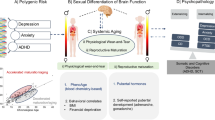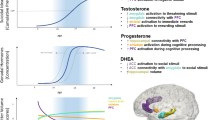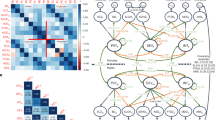Abstract
Females are superior to males on a range of tasks indexing social sensitivity, the capacity to infer others' mental states and respond with appropriate behaviours and emotions(1-3). There are also sex differences in psychiatric disorders in children and adolescents. Boys have higher rates of psychiatric disorders before puberty, but disorders increase markedly in girls after puberty (4). The causes of the commonest forms of disorder, antisocial behaviour problems in boys, and depression in girls, entail altered brain function caused by genetic variations and psychosocial adversities mainly arising in the family, and the interaction between the two (5;6). This may be explained by sex differences in social and emotional sensitivity provided they can, first, account for male vulnerability to develop antisocial problems in the face of adversity before puberty, second, explain girls' resilience before puberty, and third, account for female vulnerability to depression in the face of adversity after puberty. Associations between reduced social sensitivity and antisocial problems in young children (7;8), and between increased social sensitivity and depressive symptoms in adolescents (9) have previously been demonstrated. However sex differences in the effects of adversity on social and emotional sensitivity have not previously been examined. Here we show that among five year olds, recent adversities (maternal depression and marital discord) are associated with elevated sensitivity in girls but with reduced sensitivity in boys.
Similar content being viewed by others
Article PDF
Author information
Authors and Affiliations
Corresponding author
Rights and permissions
About this article
Cite this article
Hill, J., Sharp, H. & Murray, L. Adversity and sex differences in social and emotional sensitivity in children; a possible mechanism for sex differences in psychiatric disorders. Nat Prec (2010). https://doi.org/10.1038/npre.2010.4553.1
Received:
Accepted:
Published:
DOI: https://doi.org/10.1038/npre.2010.4553.1



